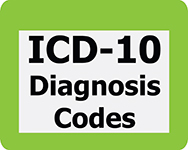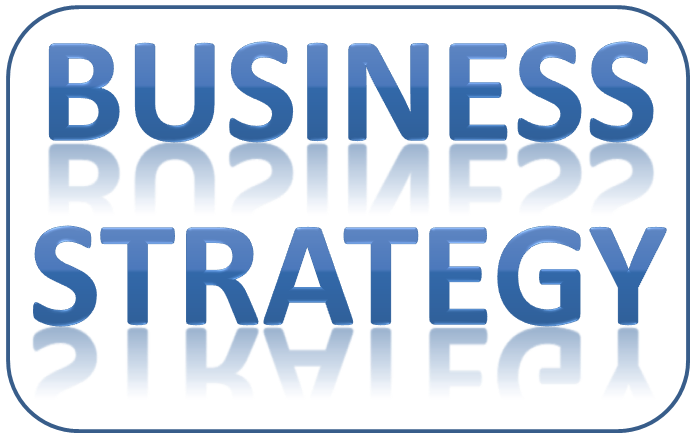ICD-10 Codes for the Chiropractic Practice

ICD-10 diagnosis codes in a step-by-step free webinar. See what Genesis has built for ICD-10 diagnosis codes so your practice will get paid in full and on-time. View this free webinar to see exactly how Chiropractors can choose the correct ICD-10 codes. Comments so far have been positive, “Very Intuitive” and “Easy to Use.” If you’re not already our client, then schedule a free demo. Read the transcript: Jason: Welcome, everyone. It’s really good to have you here this afternoon. It’s Jason Barnes and joining me, as always, is my illustrious co-host to these webinars, Jessica Pancoast, the head of the training and help desk teams here at Vericle. We’re really excited to have everyone and this has been a hot topic. And so we are excited to talk about ICD-10 one more time. And so this will be a recap of a lot of the other webinars that you’ve seen including some of the system updates and what we’ve learned so far. It will not include all of the content because we won’t be doing things like macros today. We are just gonna include the actual system functionality for finding codes, choosing your ICD-10 codes based on your ICD-10s, how to search ICD-10 codes when you’re not cross walking over from an ICD-9 code and making sure that you know how to save those codes, save the searches and group them however you’d like to. So we’ve had some updates there and we’re really excited to share those today. Not only that, if you have not yet actually created those hierarchies in your system, we’re gonna show you how you can go about doing that with a test patient, and to kick it all off we’re actually gonna show you how to find your most popularly used or frequently used ICD-9 codes so you know which ones need to be mapped over. Jess, anything to add? Jessica: No, I think that covers everything that we need to go over. Jason: That’s what we’re planning on doing today. So, thank you for joining us and we’re just gonna dive right into it. Today everyone watching should be familiar with the screen that’s up. This is a fake patient where we are looking at the travel card. You can see there’s x-rays, there’s no ICD-10 or ICD-9 information, and we’re gonna go over that functionality. But before we get into that we actually want everyone to take a break and think about this process as a whole. In order to figure out which codes you’re gonna need to select so that you’re ready to more readily choose your ICD-10 codes, I wanna to take you into another system. This is actually a real practice in our system that we’re showing you right now. All the names have been changed so that we’re not using anybody’s real practice information, but this is the last year worth of billing information by diagnosis code. Our recommendation is that you run a billing status report to find out which ICD-9 codes you most frequently use because what we found is, although there are a number, 10,977 visits with 11,150 code selections used, there were only 40 total diagnosis codes used last year by this practice. And if you look at them by percentage, a vast majority of those visits were covered by 10 codes, 8 codes. So what we want you to do is know how to find out what those codes are for your office. To do that, you head to reports, go down to Billing Analytics, choose your billing stats report that’s how we got here. In the bottom of this report, I recommend going back one year, but six months should be adequate, you change the date range and most importantly you have to choose Diagnosis 1. Now, this might not exist in your drop-down or pop-up, in this case of selections. If it does not that is not a problem, you go back to reports…back to Billing Analytics and then choose your billing stats configuration report. This billing stats config right here will allow you to actually choose Diagnosis 1, make a name for it, save that name and then you’ll have to go back refresh your billing status report and that way you’ll be able to access that new code that you’ve just created for your billing status report. In this case, let’s make a note that 739.1 is the most commonly used code by this particular office. A high-volume office who sent out over 2345 claims in the last year with this diagnosis code on. Jessica, do you have anything else on the billing stats. Jessica: No, that explains all. The only thing I can think of is you wanna make sure that Insurance Only and Pip Only is unchecked down the bottom. Jason: Unchecked, great clarification, thanks. Okay, so getting back to it we want you to be able to create a hierarchy, create favorite codes that will allow you not have to search each time you have a new patient or an existing patient that walks through your door to know what your 739.1 equivalent or equivalents will be in ICD-10. So we’re actually gonna walk you through that process, but the first thing we need to let you know about the three areas where ICD-10 codes are going to be relevant to you. The first you’re gonna see is the ICD-10 traffic light which I am highlighting right now with my mouse. We’re not gonna click on that just yet but most things in our systems that have a color associated with it are drillable or clickable, you can click on those things. The second are the two lines right here where you used to see just your ICD-9 codes, but now you’ll see both ICD-9s and ICD-10s. And then, in two other places, you’re gonna get the same exact interface, both the Diagnoses tab as well as your EMR Assessment tab. And everyone
Is the Infinite Banking System the Answer?

by Garrett B. Gunderson Some of the most frequent questions we get at Freedom FastTrack have to do with infinite banking. The financial strategy, which leverages the living benefits of cash value life insurance, was created by Nelson Nash and is detailed in his book Becoming Your Own Banker. Other popular books on the subject include Bank on Yourself by Pamela Yellen, The Banking Effect by Dan Thompson, Prescription for Wealth by Tom McFie, and Live Your Life Insurance by Kim Butler. I would characterize my attitude toward infinite banking as “cautiously positive.” I’ve personally interviewed Nelson Nash twice by flying him to Utah. I’ve ran hundreds of infinite banking calculations using financial software and consulting financial software developer Todd Langford. I’ve even used the concept in my own life. The problem with the strategy is that most people who do it or want to do it ignore the larger context of their full financial blueprint. It is frequently sold as a magic bullet. It tends to be a classic case of, “When all you have is a hammer, everything looks like a nail.” The truth is that it’s just one strategy and technique surrounding one product. And as you frequently hear me preach, strategies are only as useful and profitable as the people executing them. Infinite banking is a one-trick pony that can be useful in certain circumstances for certain people, but it’s not for everyone and it doesn’t solve every financial problem. To echo another theme I stress, if you’re asking whether or not you should use the strategy, the obvious answer is that you shouldn’t because you’re not educated enough yet. When you know enough about the strategy, you’ll know whether or not it’s appropriate for you, and how to execute it to fit within your particular financial blueprint and meet your specific needs. So let me give a brief overview of the strategy, then I’ll reveal its blind spots and pitfalls and explain how to use it appropriately. What is Infinite Banking? In concept, the strategy is simple: You use your whole life insurance cash value essentially as a line of credit. Instead of paying banks interest when you finance cars or other purchases, you pay that money back into your policy and essentially to yourself. This is done by funding dividend-paying, equity-building permanent life insurance. Once your policy is funded enough to make a major purchase, you utilize your cash value, take out a policy loan to make the purchase, then make “payments”—with interest—back to your own life insurance policy. The cash value of permanent life insurance is referred to as a “living benefit,” because you can access it throughout your life. Whereas term life insurance provides a death benefit only, permanent life insurance offers living benefits, such as the cash value, tax-free growth and tax-free withdrawals (under specific guidelines), liquidity, dividends (on certain policies), and liability protection (in most states). The strategy is smart, to be sure. Consider a five-year, $20,000 auto loan at 7 percent interest. On that loan your monthly payment would be $396.02. At the end of five years, you’ll have paid $3,761.44 in interest alone. Why not recapture that interest to build your own wealth, rather than padding bankers’ accounts? By the time you pay off the car, instead of just having a dramatically-depreciated asset, you’ll have the car, eventually you can build a way to have your $20,000 restored, and you can even have an additional $3,761 (not fully considering the interest that the insurance company may charge you on the borrowed money). So what could possibly be wrong with the strategy? Problem #1: Insurance Protection Comes First The trick to making infinite banking work as quickly and effectively as possible is typically getting a low amount of insurance coverage (face value, or death benefit), then max out your premiums (also known as over-funding the policy). Remember that the goal is to build up your cash value. The focus is on the living benefits, not the death benefit. But fully protecting your human life value with the proper death benefit amount should take precedence over any living benefit. Infinite banking makes the cash value the main benefit of permanent life insurance and overshadows the importance of the death benefit. Before you even consider infinite banking, you first need to maximize your insurance protection. That is the primary and most important purpose of life insurance. Living benefits are nice, and in most cases I highly recommend permanent life insurance with living benefits over term insurance. But they should be viewed in their proper context as supplemental benefits, not the primary benefit. In fact, before you even consider the type of insurance you should buy, you first need to understand how much death benefit to have. Your amount of life insurance to protect your economic value (replacement of income) is the primary consideration to drive all decisions regarding the type you purchase. This is why I don’t always advocate whole life insurance 100 percent of the time. I’ve seen too many cases where insurance salesmen sold permanent policies people couldn’t afford, and who then lost their policies because they couldn’t fund them. Just as it’s a problem to get too little insurance coverage, it’s also damaging to get too much whole life insurance. Focusing on death benefit first avoids problems like this. Some people may purchase convertible term insurance now to get the proper amount, then convert it to permanent insurance as their cash flow situation improves. (HINT: make sure your term insurance is convertible and with a company that has whole life insurance). This is another way to say that a person’s comprehensive financial blueprint should govern financial decisions, which leads me to my next point. Problem #2: Lack of Context Infinite banking, if right for you, should be just one piece of a much larger puzzle. It shouldn’t be the one thing you implement at the expense of other important things in your life. Your complete financial blueprint
What Business Owners Should Prepare for in the Current Political Environment

Do Business Owners overpay taxes? by Brett Sellers, CPA with Garrett Gunderson We find that 93 percent of business owners are overpaying on their taxes, yet 100 percent say they don’t prefer overpaying them. Plus many are concerned or even afraid about the changes and current tax environment. So with so much talk now about an impending “financial eclipse.” I’m no prophet, but it doesn’t take divine revelation to know that our current situation is tough for business owners, and it will likely get worse. President Obama has defined the wealthy individuals with incomes over $200,000 and married couples with incomes over $250,000. Although he campaigned on not raising taxes on middle class, he wants to increase the taxes on taxpayers earning above those amounts. He wants to reinstate the 36 and 39.6 income tax rates on high-income earners. He is also pushing to increase the capital gains tax rate from 15 percent to 20 percent, and a dividend rate raise from 15 percent to at least 36 percent. So what can you do about it? The best advice I could give any business owner isn’t technical or legal—it’s mental and philosophical. Your decision to increase your productivity will impact your business and net worth far more than any technical advice I could give you. Tax rates will likely go up. Nothing we can do about that. What we can do is increase our production to offset the tax increase. The antidote of a 5 percent tax increase is to increase production by 10 percent. Someone once wisely said, “You’ll never go broke paying taxes.” If you’re not paying taxes, it means you’re not making any money. If you pay more in taxes, it means you’re making more money. So don’t let your attitude and actions be dictated by doomsayers. Don’t be frozen in fear or frustration. Be proactive and productive. Concern yourself less with technical tax code and more with growing your business. Having said that, I’ll also stress that the current environment makes tax planning even more important than ever. If your car insurance rates go up, it becomes important to consider your policies. Likewise, if your tax rates go up, the benefit of tax planning is exponentially higher than it was before. More diligent planning is a vital strategy for dealing with increased tax rates. If your tax rate goes up by 5 percent but you can find 5 percent more in deductions by better planning, you’d be in about the same place. Truthfully, there are no real opportunities to be harnessed now. The best you can do is to mitigate damage by hiring a good tax planner. But, while you’re working on finding more reductions, remember that your best bet is to increase your production. If this philosophy is congruent and you want to know specific strategies, check out the upcoming Curriculum for Wealth where Garrett will interview Brett and get straight to strategy to put money in your pocket. Don’t be part of the 93 percent overpaying tax, find money without having to work harder, hire more people or lose any more sleep. http://www.freedomfasttrack.com/cfw Brett Sellers is a licensed CPA at Stewart, Archibald, and Barney, LLP in Las Vegas, Nevada. He has worked with business owners for more than twenty years. Brett feels strongly that a business cannot achieve long-term success without accurate financial data and a constant measuring of the key activities of the business.
Focus, Identify, Create Value and Repeat

by Garrett B. Gunderson Your recipe for working with people you enjoy, know you can help, and making more money. To be as productive as possible it is essential to be crystal clear about what your business is specifically designed to do, and who you are ideally positioned to serve. This means identifying your best existing patients and figuring out who they really are as people. If you can understand what age group, gender, education level, what they do for hobbies, what books they read, where they hang out, how much money they make, etc. then you can make it a point to go out and find more people who are just like your best patients/customers. To do this make a conscious choice to determine who is already existing and “Ideal”, and build a relationship with them. Have appreciation dinners, invite them out to hike or snowshoe, or share experiences with them. Let them become more than just clients or patients – build a relationship. In this process you will not only learn how to serve them better, you’ll understand how to attract more people just like them. This leads to a business full of people that you love to see and who love to come see you. Once this happens the profits are an inevitable result of serving those that appreciate your value the most. They key is to overcome the concern that is you focus or get to narrow that you will miss out on others you could have otherwise have worked with. Here are some questions and considerations to help address and overcome this objection. If you were to look at your top 20 percent of people you work with what percentage of your revenue are they responsible for? How many people have they referred versus the bottom 20 percent? What percentage of your time is used for addressing people that do not pay on time, do not refer people and do not appreciate your service? What impact does that have on your energy, confidence and ultimately the bottom-line? Do you think there are plenty of people in your community or even your state that fit the “ideal” profile? What would your life look like if that was who you spent your time and focus on? What level of value could you create for them? How would it allow you to focus more on value creation and less on appeasing people that do not appreciate who you are, what you do or that simply are not compliant with implementing your recommendations and getting the full value you offer? So, find the best people that you enjoy working with the most. That gets the best results and refer the most people. Focus on building those relationships, cultivating those relationships, and asking them how you can create the most value for them. To discover other overlooked opportunities most business owners miss and to gain more freedom in your business as we expose models most didn’t think was possible, yet are achievable in a short period of time, check out www.freedomfasttrack.com/cfw as I interview business strategist Brandon Allen. Brandon opened up and built Wells Fargo branches for a decade before becoming the COO of my firm, Freedom FastTrack. In order to more fully express his expertise and purpose he now shares his insights and discoveries through business expansion and management with Freedom FastTrack members. In a bottom-line, no fluff interview he will be sharing how to: Integrate metrics and numbers to improve business Unveil the biggest mistakes business owners make in managing their business (he exposed this for me and transformed my INC 500 business) How can you create and leverage your authority in your market How to address and confront employee behavior in the business Time management The key habits to run a successful business and more

